-
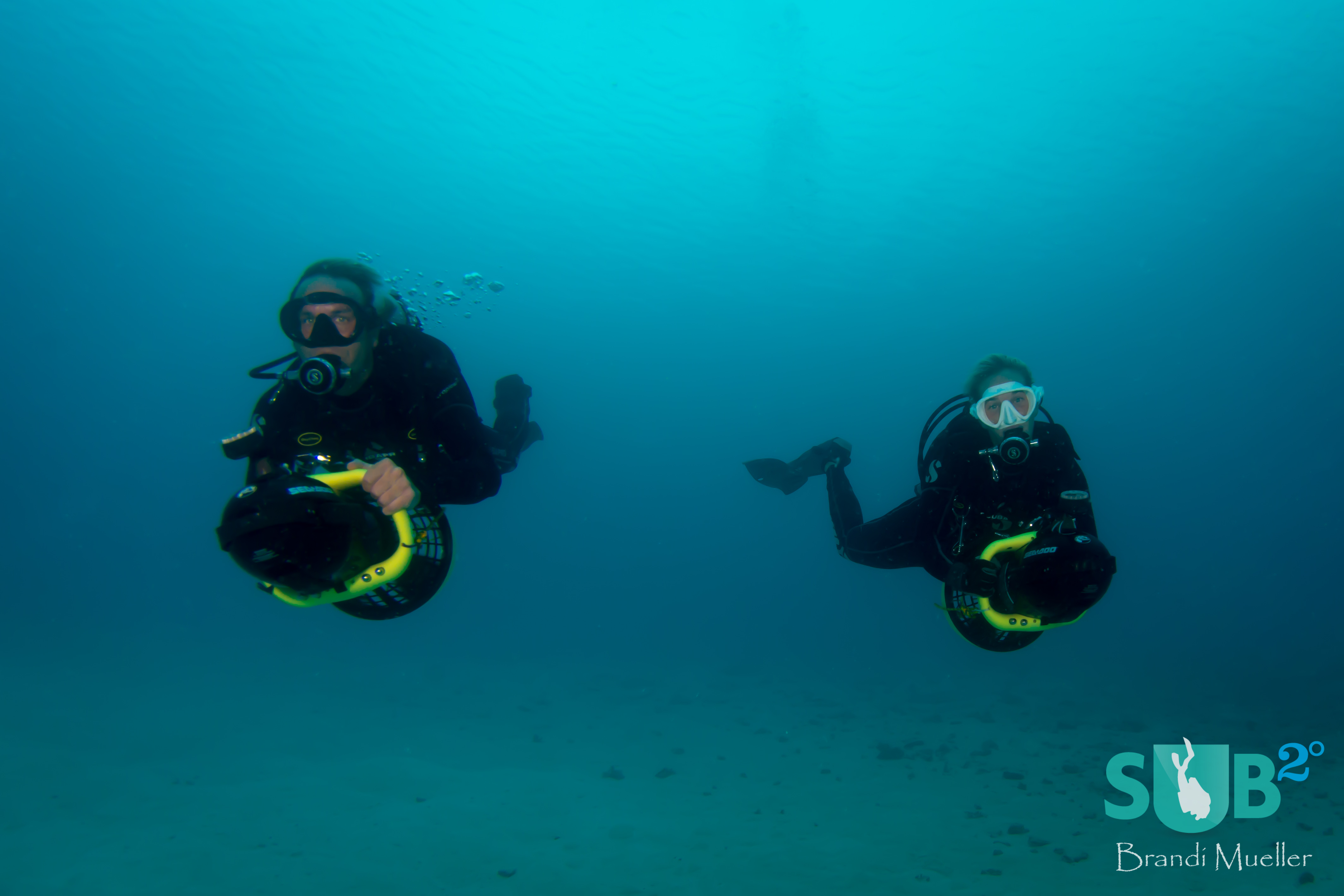
It's A Bird, It's A Plane - It's a DPV!
Like speeding bullets (well almost), these divers cruise underwater barely kicking a fin. -
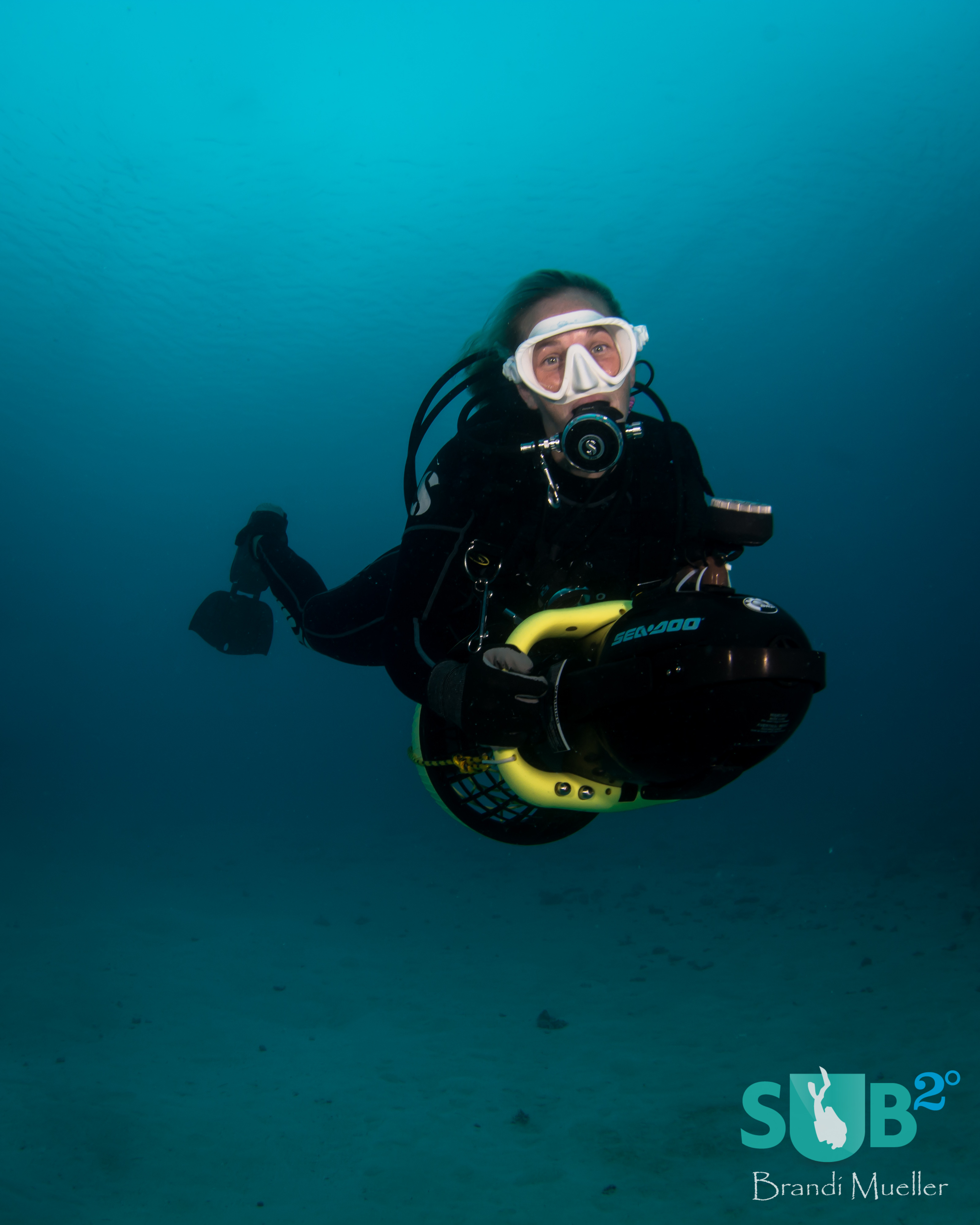
More Fun With A DPV
A diver zooms around a dive site on her DPV. -
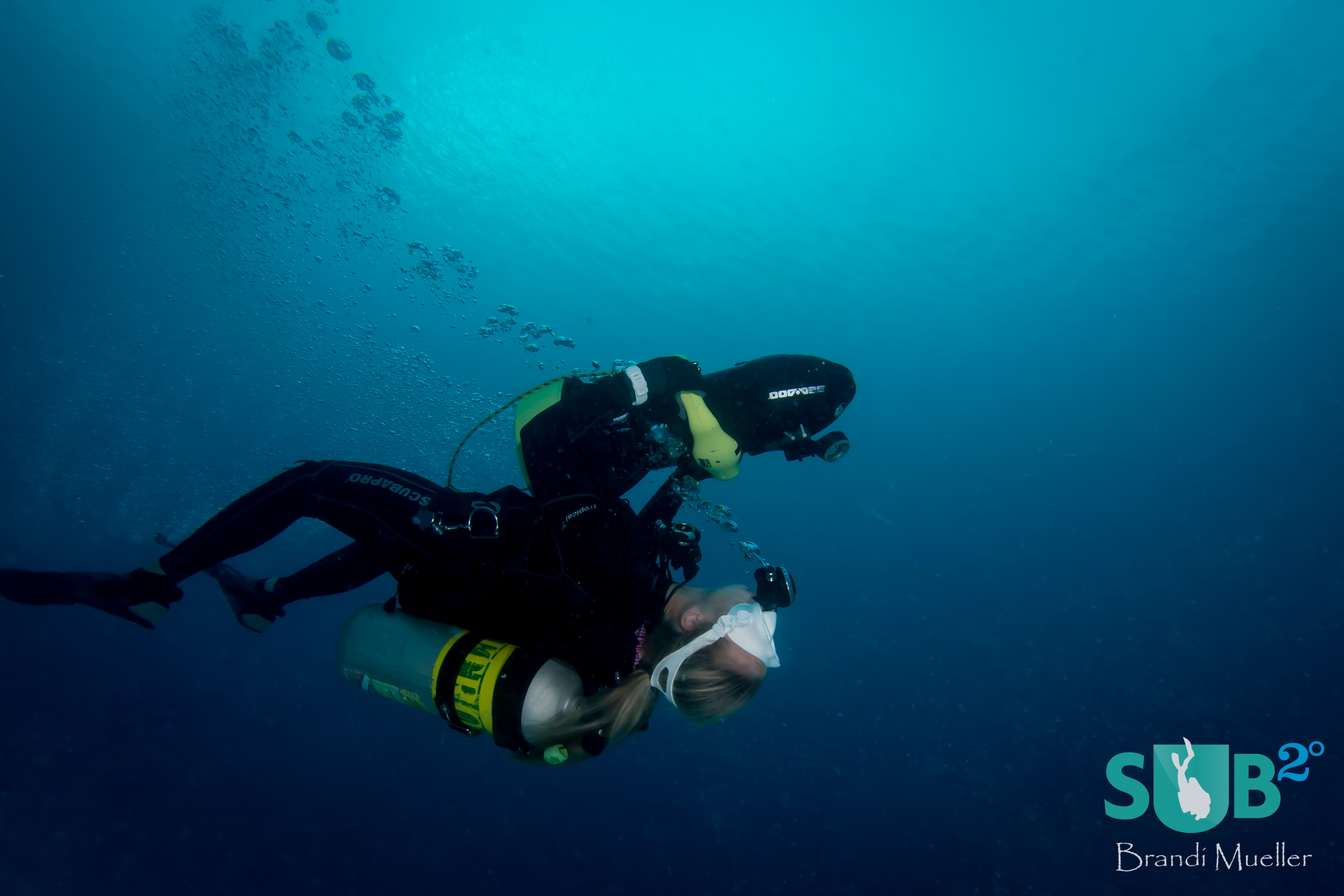
Which Way Is Up?
The bubbles rise, as a diver gracefully spins around underwater. -

Ready To Dive
Geared up and ready to take the DPV out on a shore dive.
DPVs
Picture yourself on a beautiful reef dive. The coral is thriving and hundreds of colorful reef fish dart about, as you effortlessly glide over the reef on a dive propulsion vehicle. No kicking is necessary, as your DPV moves you through the crystal clear water. All you have to do is take in the splendor around you. An eagle ray appears out of the blue and you make your way towards it, speeding up slightly to catch up, and pretty soon you are eye-to-eye and keeping pace with the ray. On a normal dive you might have only spent a few seconds watching it swim away, but with an underwater scooter you can keep up.
DPVs
Dive propulsion vehicles (DPVs) are a great way to add excitement to diving. They can help cover large distances and view larger areas of a reef or wreck, as well as get a diver to a faraway dive site. DPVs also reduce the amount of energy needed to dive. Because you don’t have to kick, air consumption is less and the likelihood of diver fatigue decreases. And of course, they’re just plain fun. Divers can have a blast rolling upside down and spinning around, weightlessly and effortlessly.
DPVs are also useful in cave and technical diving by helping reduce the burden of carrying additional tanks and gear. A dive site that may be difficult to dive because of strong currents can be facilitated with the help of a DPV. Also, DPVs can be useful in search and recovery, making the most of a diver’s bottom time while covering search patterns more quickly.
Safety Considerations
When diving with a DPV the normal rules of diving still persist. Less air may be used due to less exertion, but it’s still important to monitor air supply and bottom time. Divers may be able to stay down longer because they’re using less air, but the no-decompression limits will not change. One new factor comes into effect when diving with DPVs – the life of the DPV battery. You don’t want to make a long dive out to a reef only to have the DPV's battery die before you can get back.
Planning a dive based on battery life is just like planning a dive based on air consumption. Use 1/3 of the battery to get to the destination, use 1/3 to get back to the start point, and then there is 1/3 battery power left over as a reserve in case of an emergency.
It’s important to know how long the battery will last and also have a back-up plan for each dive if something happens to the DPV. Take into consideration how long and how far you can swim with the scooter if it stops working. If the battery dies you will be able to get it back to shore or the boat. If you can’t, remember your safety is more important that the DPV, abandon it and try to return later and recover it.
When diving with a DPV be sure to respect the environment as you do on any dive. Be careful not to damage coral or other aquatic life, and not to run into things or disrupt sand or marine life with the propeller wash.
Buoyancy control is vital in DPV diving. Not only for protection of marine life but for diver safety. It’s much easier to ascend or descend rapidly with a DPV, which could contribute to ear squeezes, ruptured eardrums, lung over expansion, or decompression sickness. Like all dives, never exceed the 18m/60ft per minute ascent rate. DPVs are meant to be used horizontally, and not upwards or downwards quickly.
Two DPVs are more fun than one and you always want to dive with a buddy. Most DPVs can carry more than one diver, so if one DPV has a problem the other can get both divers back. However, keep an eye on your buddy and don’t lose him/her while going faster.
Maintenance
As with any new scuba equipment, read the manual and learn how to care for your particular DPV. After each dive, rinse it thoroughly and immerse it completely in freshwater, running it for a short time. The internal components are protected and kept dry by o-rings, so make sure it is completely dry before you open it and keep the o-rings clean and lubricated.
Probably the most important thing is to make sure the battery is fully charged before a dive. Charge the battery completely after every use, and if the DPV hasn’t been used for a while, charge it before going on a dive. DPVs can be accessorized and popular additions include compass mounts, camera and video mounts, and different riding attachments such as seats on some models.
Taking a DPV specialty course such as PADI’s Dive Propulsion Vehicle course can help teach you all about diving with a DPV. In DPV courses, divers learn how to plan a dive with a DPV, procedures, techniques, problems and hazards, equipment considerations, and diver etiquette to avoid harming marine life. Renting a DPV from your local dive shop can be a great way to try out different types of DPVs and see which is best for you.
Further Reading:
Underwater Photography: Mindset Development Part 1
Underwater Photography: Mindset Development Part 2
Underwater Photography: Mindset Development Part 3
Featured Posts
-
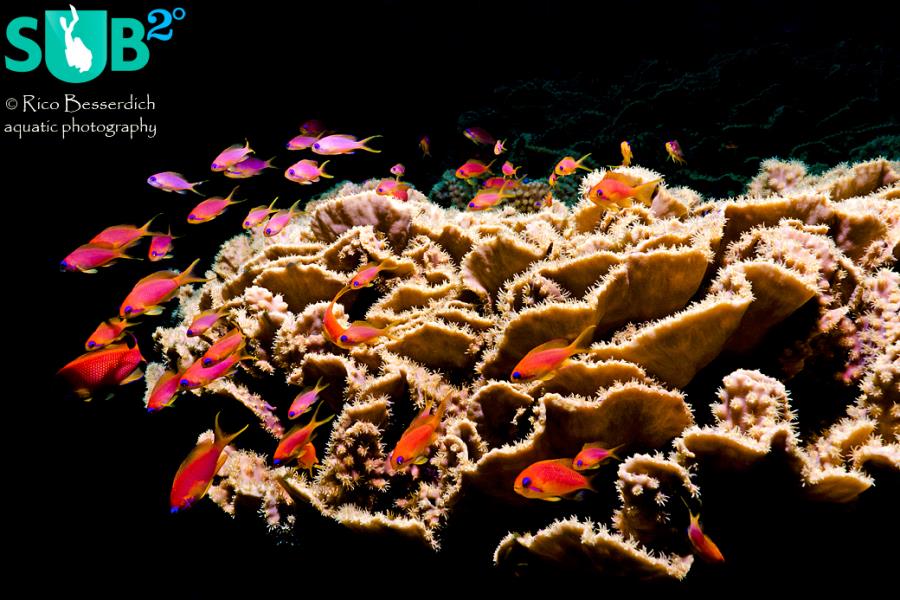
Please "Like" My Photo!
Once you've made some cool underwater shots, you would love to have more people notice your photos, for example by sharing them on Facebook. A path full of potential but lots of nasty obstacles on the way. Let's have a look!
-

Reef-Art: Looking at the Reef...
Reef-Art shows fascinating insights to an underwater world, 99% of the divers never see. Reef-Art is the "Fine Art" of macro photography. It's a passion! The passion to bring your audience something they don't expect, they h...
-
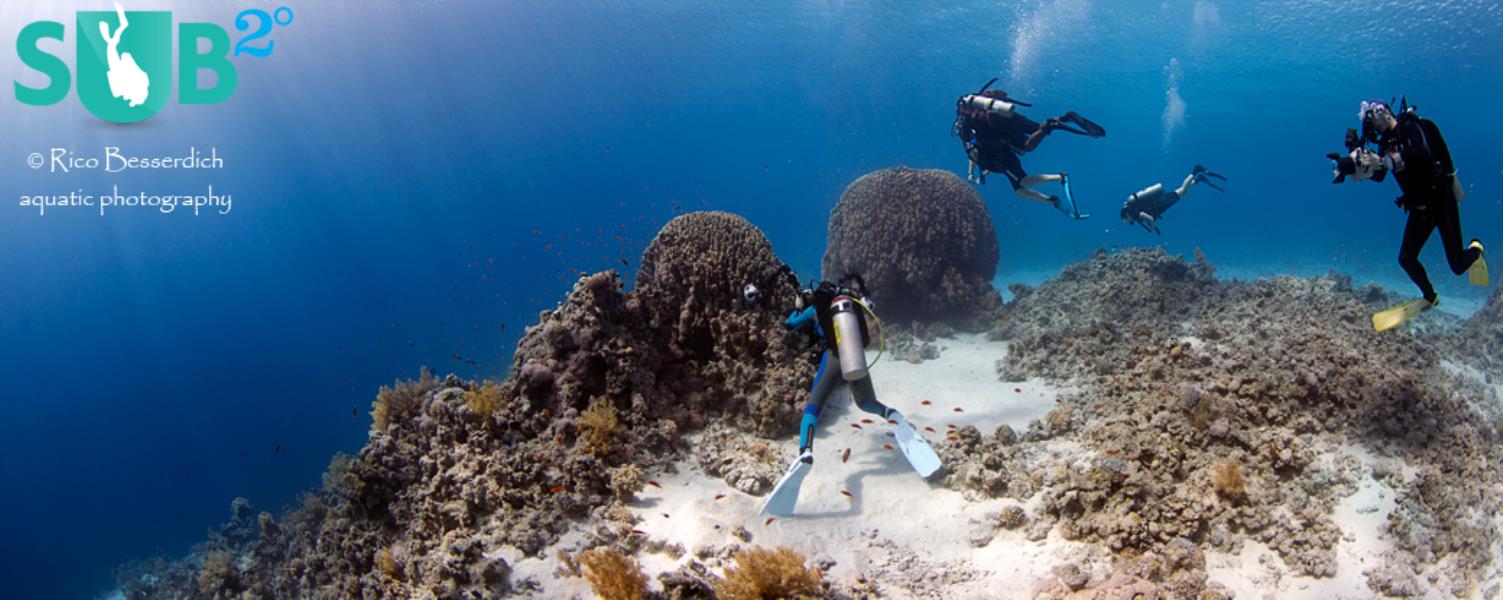
Underwater Photography: Shoot...
Are you ready for huge perspectives in your underwater photographs? Wide-angles are fine but do you want it even wider? Time to check out underwater panorama photography!
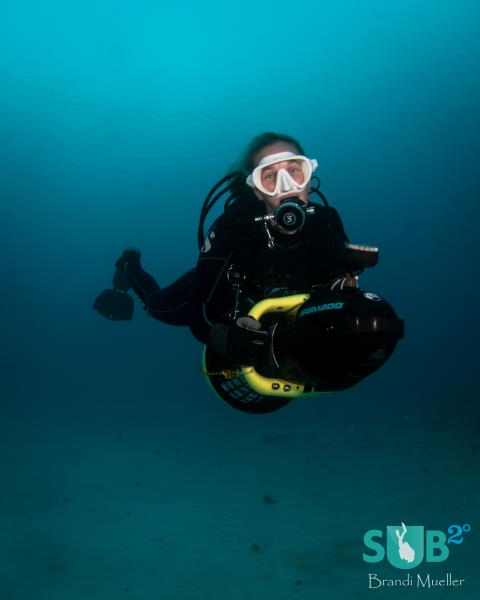
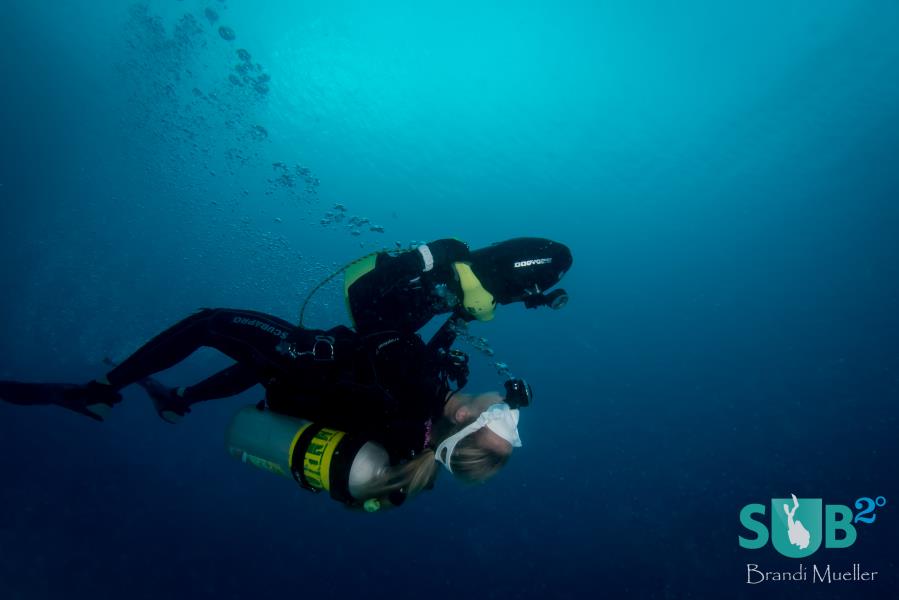



Load more comments